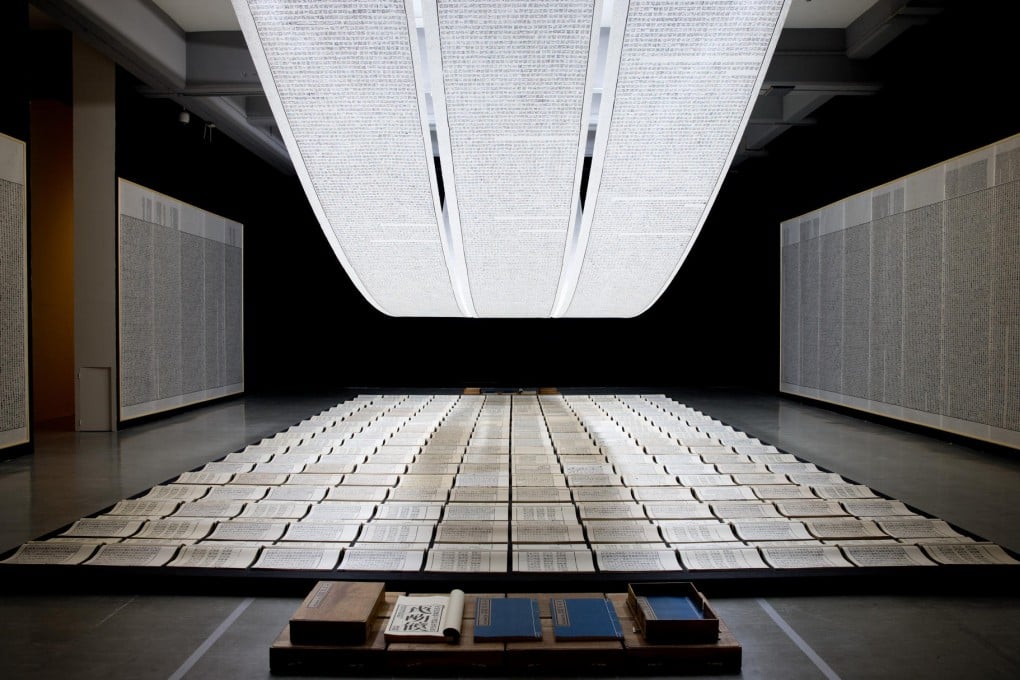Artist's fascination with text writ large
Xu Bing's fascination with text is clear in retrospective being held in Taipei museum, writes David Frazier

Xu Bing has never been prone to the art-world showmanship of other top Chinese contemporary artists such as Ai Weiwei, Cai Guoqiang and Zhang Huan, the men who will one day be remembered as his peers. In his Harry Potter glasses, wavy grey hair, knit scarves and sports coats, Xu looks more the part of the university professor than the aesthete or provocateur.
Yet in the art world of recent years, Xu's star has been rising quickly. The Chongqing native has seen his work exhibited in the Louvre, the British Museum, the Victoria and Albert Museum and, last month, as part of the first-ever exhibition of contemporary Chinese ink painting, at the Metropolitan Museum of Art in New York.
Even though Xu Bing's work looks very Chinese it also has very universal concerns
If his accession to these grey-stoned, old-guard institutions is not enough to set him apart from most contemporaries, Xu is also the recipient of a "Genius Grant" from the MacArthur Foundation, a sort of de facto nomination as one of the top intellectuals of our time. The first large survey of his work recently opened at the Taipei Fine Arts Museum. "Xu Bing: A Retrospective" will be on display until April 20.
The show traces the 59-year-old artist's career from his teenage years to the present day, examining nearly two dozen major series of his works. Stand-outs include a 32-metre-long rubbing of a section of the Great Wall, a book of nonsensical Chinese text so large it fills an entire room, a "tiger skin rug" composed of more than 500,000 cigarettes, and a system of writing that appears to be Chinese, but is actually English.

"He tries to reactivate tradition, and that is very important, because for the past hundred years, a major controversy for Chinese intellectuals has centred around the question of how to bring in the West. But he is doing the opposite, looking back to his own culture.
